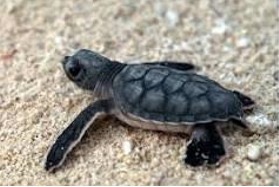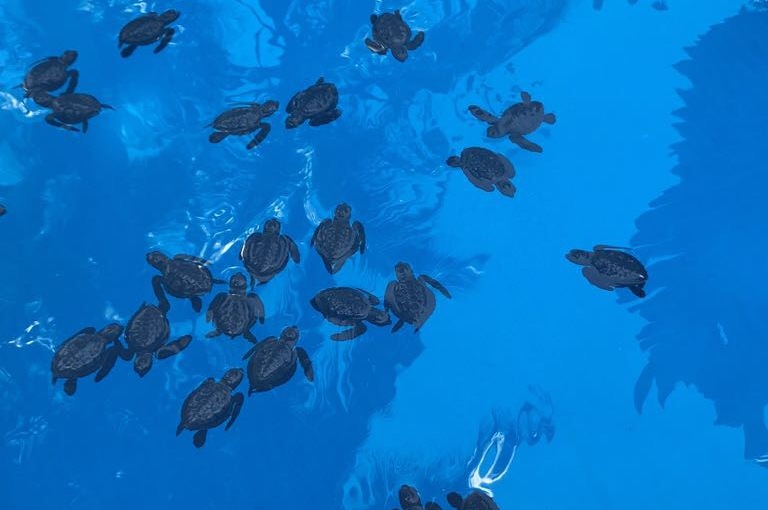
E’ una tartaruga marina della famiglia delle Cheloniidae, sicuramente la più comune alle Maldive.
Al Nika Island Resort, con l’aiuto di un biologo cerchiamo di proteggerle e accudirle fino all’età adulta. Questa specie in pericolo critico di estinzione perché minacciata da predatori (quando è piccola), dal commercio di cui è oggetto, dalla riduzione dell’habitat e dalla raccolta delle uova da parte dell’uomo.
Lo scudo è convesso, a forma di cuore, e presenta quattro paia di parti laterali. Le piastre cornee sono caratteristicamente sovrapposte come gli embrici di un tetto ed a ciò è dovuto il nome della specie.
La testa di queste tartarughe è ben sviluppata. Sono prive di denti con un becco molto appuntito e tagliente, simile a quello dei rapaci.
Le zampe anteriori sono larghe, con due unghie a forma di spina sul margine anteriore, e vengono utilizzate come pinne mentre quelle posteriori come timoni.
La corazza è bruno-giallastra con marmoreggiature nere. Il carapace può misurare fino a 90 cm.
Sebbene questa tartaruga sia onnivora, ha una dieta essenzialmente basata sulle spugne. si nutre anche di alghe e di celenterati come le attinie, le meduse e la caravella portoghese.
Si riproduce da febbraio a luglio, a seconda che ci si sposti da sud verso nord. Scava nidi di circa 50 cm, e ogni femmina può deporre un centinaio di uova che schiudono in 45-55 giorni. I piccoli, appena nati, si dirigono verso il mare; purtroppo sopravvivono in pochissimi.

